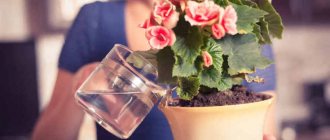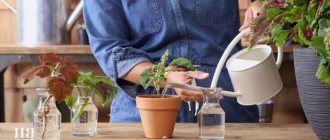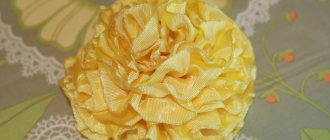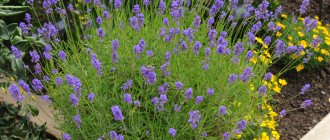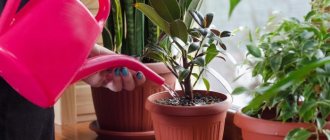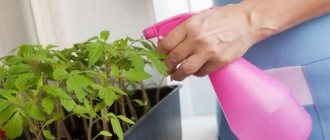The frequency of watering depends on many factors, including the following:
- Pot material. Flowers growing in clay pots need more water than those planted in a plastic container, since the rough walls also absorb water.
- Flowerpot size. A larger container will require more water.
- Plant arrangement. Crops placed on the south side of the room should be watered more often and more abundantly.
- Temperature conditions. If the room is hot and the air is dry, the soil will dry out faster.
- Weather conditions and plant growth phase.
How often to water indoor plants
During the dormant period, some crops do not need watering at all. Therefore, it is recommended to organize watering according to the calendar.
in spring
In spring, plants awaken and prepare for the active growth phase. Therefore, soil moisture should be more abundant. It all depends on air parameters - temperature and humidity. But usually the gardener is recommended to wait until at least a third of the soil in the flowerpot has dried.
In summer
Summer is the time of active growth and flowering of all crops, including indoor ones. Therefore, they need to be provided with good hydration. Usually watering is carried out several times a week. It is also worth taking into account the high air temperature and low humidity. Most often, additional spraying is necessary.
IMPORTANT! If the summer is rainy and cold, you should not be overzealous with watering, as excessive humidity can cause rotting of the root system.
in autumn
At the beginning of autumn, the summer watering regime is still maintained. Mid-autumn is a transition period during which the plant adapts to a new soil moisture regime. You need to reduce the frequency and abundance gradually - throughout the month. And at the end of the autumn period, watering should be more similar to winter.
in winter
Proper watering in winter depends on the type of indoor flower. For some, soil moisture is reduced to once every 7-10 days, while for others it stops altogether. If the plant bloomed actively in the summer, then, most likely, in winter it is provided with complete rest, reducing the air temperature and the length of daylight hours, as well as completely canceling watering.
Factors influencing the irrigation regime
- The frequency and volume of watering is greatly influenced by the size of the plant. If it is large, it consumes more liquid, since its roots are more massive and absorb a lot of liquid.
It is especially important to take into account the fact that the plant needs to be replanted if you see that the ratio of its dimensions to the size of the pot is not equal.
- In the summer, at the height of the heat, it is also necessary to ensure that the plant consumes a sufficient amount of moisture. In this sense, they are very similar to us - people. When we are hot, we experience extreme thirst. So think about it. Without regular watering in the summer, the plant experiences great stress.
- Cold season and high humidity. This means that watering needs to be reduced.
How to water flowers correctly
Top watering
The option with the top irrigation method is the most common and traditional. If you constantly water the crop from above, the soil is evenly saturated with moisture, and the plant is as comfortable as possible.
When top watering, you need to evenly distribute the moisture over the surface of the substrate to avoid the formation of grooves and exposure of the roots. Most of all, succulents, violets, and banana trees prefer such moisture.
Bottom watering
Sometimes plants cannot tolerate moisture, or the roots, which cannot tolerate drops of water, extend beyond the soil. In these cases, it is better to give preference to watering through a tray. In this case, the plant absorbs water on its own in the amount it needs.
This option is suitable for begonias, azaleas, saintpaulias and soleirolias.
IMPORTANT! Sometimes bottom watering leads to the rise of all minerals to the surface of the soil and the formation of a white coating. To restore balance, it is recommended to provide overhead watering.
Irrigation method
Most indoor plants, including orchids, are recommended to be watered using the immersion method in the summer. This option will accurately ensure the hydration of the entire earthen clod. You need to keep the flowerpot in water until air bubbles come out of it.
This method allows you to restore the structure of the substrate after prolonged drying. You can immediately add nutritional complexes to a container of water.
What determines a plant’s need for moisture?
The plant's need for watering depends on a number of factors:
- Weather.
- The degree of power of the root system.
- Development phase.
- Capacity size.
- Lighting.
Please note that the moisture needs of each houseplant are individual. You cannot use the same watering method for absolutely all the plants in your home. Often, a lack of moisture can be indicated by drooping leaves and dry lumps of earth on the surface of the soil, and dried out buds of inflorescences. If you are unable to independently determine how saturated the soil is with moisture, you can use an unusual, but very convenient method. Try purchasing a special device in the form of a thermometer that will determine the level of moisture in the soil by placing it at the depth specified according to the instructions. It is especially important to purchase such indicators for more demanding plants. Because, in addition to soil moisture, it determines the condition of the root system.
We hope that our article helped you and your plants will always be healthy. Use the methods we described to revive plants if you still encounter a problem. Follow your watering schedule. Explore the ins and outs of your houseplants. And then in return they will delight you with an excellent view.
What water to water indoor plants
It is not recommended to use ordinary tap water to moisten the soil, as it most often contains heavy salts. These salts will gradually coat the roots with a coating that will prevent moisture absorption.
You can take water from the tap, but you must first filter it, or better yet, let it sit for at least 24 hours. The settled water will also become the same temperature as the soil.
The optimal water temperature is room temperature.
REFERENCE! Experienced flower growers are sure that it is not worth choosing mineral and distilled water to moisten the substrate.
Once a week you are allowed to water the plants with water from the aquarium. This is no longer just a liquid, but a ready-made organic substrate.
Dependence on the time of year
In addition to the time of year, be sure to take into account the parameters of the microclimate in the room .
It can be hot in apartments and rooms of private houses in the summer when the owners are absent, since the air conditioners and split systems are turned off.
In these cases, watering is carried out in the morning and the moisture status is monitored in the evening; if necessary, additional water is added.
At the same time , apartments and houses are dry in winter . In these conditions, spraying the leaves in the middle of the day works well. In winter gardens and greenhouses, temperature fluctuations are observed - it is undesirable to carry out evening watering in such conditions.
Types of watering indoor plants and flowers
Excess
Excessive moisture means that the water in the pot must stand constantly. Only a small number of plants prefer this regime. These include indoor roses, Persian cyclamens, azaleas and rhododendrons.
Abundant
The option involves abundant moistening of the substrate, but without stagnation of water in the pan. This option suits most indoor plants.
Moderate
When choosing such a system, the soil must be moistened after its top layer has dried. There is no need to moisten the soil abundantly. Palm trees, dracaena, monstera, chlorophytum, asparagus and aspidistra respond well to this regime.
Rare
This means watering plants only during the period of their active growth, fruiting or flowering. Gloxinia, epiphyllum, caladium, hippeastrum, zygocatus and philodendron need rare watering.
What influences the timing?
The frequency of watering (frequency) and the choice of time of day are influenced by:
Type of plant .
There are flowers that require excessive, abundant, moderate and rare watering. It is advisable to water the first and second types more often and spread the daily dose of water twice.- Soil moisture around the flower .
Different indoor microclimates can cause rapid drying out of the soil or, conversely, stagnation of moisture. Both options are undesirable. If the substrate is dry, then additional watering is carried out outside the schedule. If the ground surface is wet, the procedure should be postponed. - Season . It is necessary to determine the phase of flower development in different periods. Most plants stop growing in winter and require less water; other species actively grow and bloom in winter, and “rest” in summer.
- Location of windows relative to cardinal directions . On south-facing windows, moisture evaporates quickly during the day, so most of the water is added in the morning, adding water in the evening if necessary. If the window faces north, avoid evening watering.
- The material from which the pot is made . Moisture evaporates through the walls of clay pots, unlike plastic dishes.
Mistakes when watering flowers
When watering flowers, the following mistakes are most often made:
- Hydrate at lunchtime. On hot days, watering plants at lunchtime is highly discouraged. The sun's rays together with drops of water can cause burns to the roots or leaf blades.
- Leave water in the pan. With the lower option of soil moistening, the water in the pan should remain no longer than 4-5 hours. During this time, the plant will take as much water as it needs. The rest must be drained to avoid the formation of swampiness.
- Uneven hydration. You cannot first water the flower every two days, and then once a week, but more abundantly. It is important to strictly follow the recommendations for caring for each specific plant.
- Strong jet of water. Due to the powerful water flow, ditches can form, exposing the root system. It is better to take a small watering can with a sprayer.
- Same schedule for all crops. Care for groups of plants may vary. When growing a large number of flowers, you will have to water every day, but such care will ensure abundant growth and flowering of home crops.
- Unsuitable water. At first, the harm from tap water may not be noticeable, but over time, the grower will notice the appearance of a white coating on the surface of the soil and on the roots. This indicates an accumulation of salts due to watering with inappropriate liquid.
- Lack of drainage. If there is no drainage layer, swampiness cannot be avoided.
Improper watering: signs and their elimination
The most common cause of plant death is improper watering. It is either excessive or insufficient.
- With excessive watering, you can observe the formation of mold on the surface of the soil.
- The edges of the leaves are predominantly brownish and black. They dry out and become brittle.
- Plant growth slows down.
- Leaves become yellow and limp.
- The buds of flowering plants wither and fall off.
Is it possible to revive a dried out houseplant?
In order not to bring the plant into a sad state, it is important to take proper care of its health in advance. Before restoring the plant, do not rush to flood it as thoroughly as possible. This will most likely have an even more detrimental effect on his condition, because he is unaccustomed to proper moisture intake and simply will not be able to cope with large amounts of liquid.
First of all, be patient and set aside free time for resuscitation. There are effective ways to bring the plant back to its previous shape:
- If moisture has a positive effect on the leaves, then start spraying it with mineral water.
- You can also put a wet sponge in the soil, which in turn will release liquid as needed for the plant.
- Assess the condition of the root system. To do this, you will need to remove the plant from the soil and replant it in a new one, if necessary.
- Feed the plant with mineral fertilizers.
What to do if the flower is flooded
- In this case, it is necessary to urgently remove the plant from the soil and replant it into a new one, with high-quality drainage and holes for it in the pot.
- Initially, you need to rinse the roots in water.
- Before transplanting, it is important to carefully examine the roots for disease.
- We remove the most affected areas and use activated carbon powder as a disinfectant, lubricating the cut areas with it.
- Now that the plant is ready for replanting, we place it in a new pot with soil that has already been replaced.
In addition to the above conditions, take care of the air temperature and lighting. This will also play a big role in his return to life.
How to prepare H2O?
To prepare water before irrigation, you must:
- Pour it into an open container. Pay attention to color, turbidity and presence of impurities. If possible, stand the water in an open container for 6-24 hours.
- Pass the water through a filter and, if necessary, soften it with citric or phosphoric acid. You can also use peat to acidify and prepare water at the rate of 10-15 g of the substance per 1 liter of water.
- After acidification, let the water stand for 24 hours. Check pH level. When watering, make sure that sediment does not get into the soil.
To water cacti and succulents, you can use boiled water, alternating it with filtered water.
Why is it important to use suitable water for irrigation?
The composition of water affects the digestibility of elements, the condition of the soil and the vital activity of beneficial microorganisms.
For example, a high content of calcium and magnesium salts or hardness leads to disturbances in phosphorus metabolism.
When watered for a long time with hard water, plants slow down in growth , do not bloom and throw out weak shoots. Phosphorus depletion occurs due to the formation of insoluble mineral complexes.
Also, excess mineral salts pollute the upper layers of the soil. As a result, the roots receive nutrients in a smaller volume than is introduced during feeding.
Spraying rules
Here are a few simple rules that will help you avoid problems when spraying indoor flowers:
- do not spray the plants in the morning - drops of water can refract bright sunlight and burn the leaves;
- Don't apply too much moisture - everything is fine in moderation;
- for spraying, use only stabilized water;
- add nutrients to the spraying liquid (many people use simple hydrogen peroxide for this - 5-6 drops per liter of water is enough).
Important: If you don't have the opportunity to spray during the day or evening, simply remove the plants from a sunny windowsill and moisten them. This will protect them from negative consequences.
How do soil moisture indicators work?
A soil moisture indicator is an inexpensive but very practical device that shows how much moisture the substrate contains. Costs from 100 to 300 rubles.
The indicator is used as follows:
- stuck several centimeters into the ground;
- follow his instructions;
- If the indicator shows that there is not enough moisture in the soil (usually it turns red), water the flower.
Important: Be very careful when installing the device in the ground. The fact is that during the procedure it is very easy to touch the roots, and this can cause disease or even death of the flower. The optimal solution is to place the device in the pot at the same time as planting. True, such an opportunity is not always available.
What to do if the plant is flooded?
Both excess and lack of moisture have equally detrimental effects on flowers. Step-by-step actions when flooding a plant:
- As soon as possible, carefully remove the flower with the earthen lump from the pot;
- carefully examine the root system for rot;
- if there are rotten roots, remove them;
- wrap the earthen lump in paper, leave for some time until completely dry, the amount of time depends on the degree of flooding;
- if the plant is heavily overwatered, then carefully soak the root system with a cloth;
- replace the pot or rinse the same one thoroughly and dry it;
- fill in new drainage and substrate;
- replant the flower and avoid overflowing.
Note: after overwatering, the leaves will become limp, turn brown, fall off and rot, and mold may appear on the surface of the soil.
The video will tell you what to do if the plant is flooded:
Watering methods
There are several main methods of watering:
- Traditional or improved. This method involves applying liquid directly to the base. At the same time, it is carefully poured in a thin stream into the root zone, trying not to erode the soil. After the moisture has thoroughly saturated the soil and settled in the pan, it is drained from there.
- Lower. This is necessary for some plants that do not like the contact of liquid with the stem and roots protruding from the substrate (for example, cyclomena or violets). This method involves placing the pot in a deep tray filled with water. When the soil is sufficiently saturated with liquid, the pot is returned to the main tray. Some manufacturers use only the main humidification tray.
- Dosed. It uses special devices that provide moisture in small doses. It’s good if the florist leaves home for a long time (for example, on vacation).
In the evening or in the morning?
It is best to water indoor plants in the evening rather than in the morning. This is due to the following reasons:
- In the morning, drops of water left on the stem and at the base of the roots can act as small magnifying glasses and intensify the sun's rays, which will burn the flower;
- due to the higher temperature in the morning, water from the substrate evaporates faster, and the plant may not have time to absorb it;
- In the evening, the roots better absorb liquid and nutrients.
Important: If it is winter or cloudy weather outside, watering can be done in the morning. This is due to the fact that in this case the flower does not receive sunlight and the air does not heat up much. Thus, the plant is not in danger.
